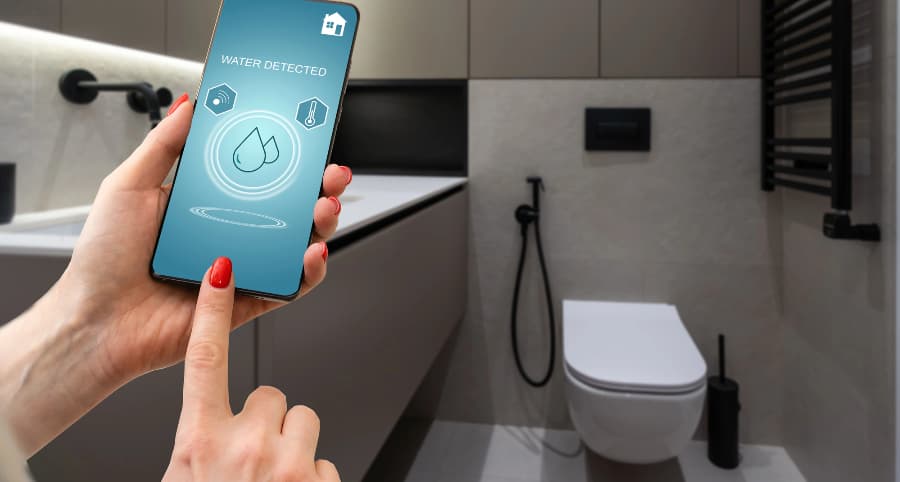How does a water sensor work and why install one with your Rockford smart home?

One minor leak at your property can result in major difficulties and thousands of dollars worth of damage. You must defend against this danger; fortunately, there’s a straightforward way to do so. A water sensor is a simple, effective, and economical solution. Explore how they work and why you should incorporate water sensors into your Rockford smart home.
How water sensors safeguard Rockford homes
Water enters homes in numerous ways, whether from a plumbing failure, storm-related event, appliance breakdown, or simple human error. No matter how it takes place, you need to know right away, and this is where water sensors come in. But how do they really work?
The majority of water sensors are conductive and work with a pair of electrodes. When water reaches the electrodes, an electrical connection is formed, setting off your alarm. You’ll also come across capacitive sensors that release an electrical field. Your alarm triggers when water touches the conductive parts of these sensors and interrupts the field. Optical sensors employing infrared LED light are an additional option.
Get more from your water sensor
Some advanced water sensors give you even more protection as they have integrated temperature sensors. This is an outstanding feature in preventing frozen pipes. If there’s a severe decrease in temperature, you’ll find out right away. Taking action before pipes break will save you from flooding and exorbitant repair costs.
Why incorporate water sensors into your Rockford smart home?
When water emergencies arise, you have to be warned right away. You can attain this goal by integrating water sensors into your smart home. Whether you’re on site to hear the alarm or not, you’ll receive an automatic notification on your mobile device. As an added benefit, your 24-hour monitoring agents will be alerted. Each second counts in a water emergency to control the destruction and interruption to your household.
Where should you place water sensors?
Any area susceptible to an influx of water is an appropriate position for water sensors. Place them in these locations:
- Bathrooms: Attach close to tubs or behind toilets.
- Basements: Water commonly enters lower floors via damaged walls or as a result of excessive rain or malfunctioning sump pumps.
- Near water heaters or appliances: Any water-using appliance might eventually leak.
- Below sinks: Water sensors are great for detecting plumbing leaks in areas you can’t see.
- Attics: Identify roof leaks promptly and avert costly repairs.
Get water sensors with your Vivint smart home
Give your property the complete protection it deserves with Vivint’s advanced tools. Our water sensors in Rockford integrate with your Vivint cell phone app to provide instant notifications any time your alarm goes off. You also benefit from incorporated temperature sensors to prevent pipe freezing. Learn more about the smart home components available in Rockford by calling (815) 362-1830 today.
